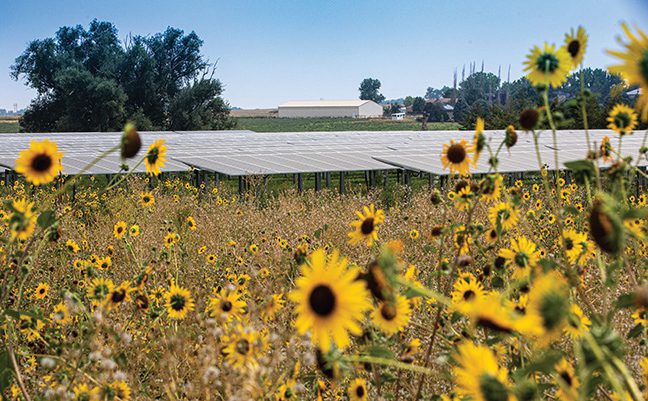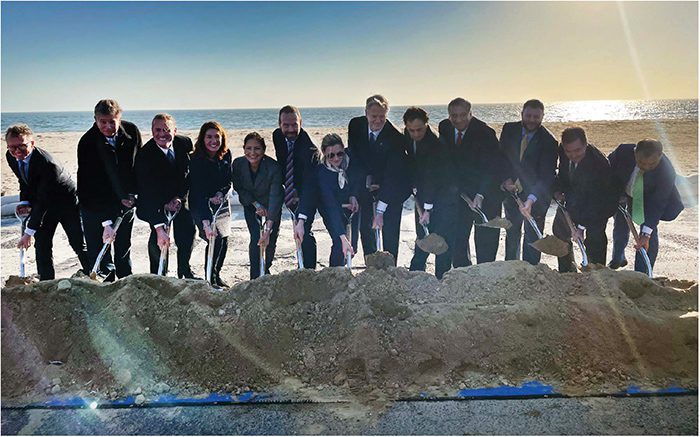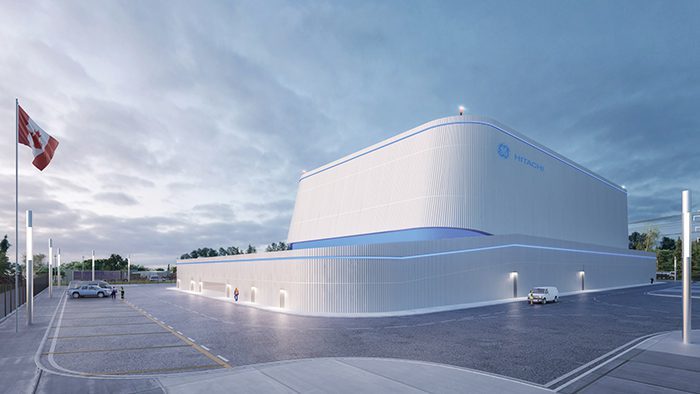
While some sectors of the power industry are struggling to stay relevant, there are many more segments that are thriving. As new technologies are developed and perfected, there is more reason than ever for people in the power industry to be optimistic about the future.
Opportunities are everywhere in the power industry these days. Not only are wind and solar energy seeing explosive growth, but also several other technologies are showing real signs of promise. Battery energy storage systems and microgrids have become mainstream grid components. Advanced nuclear power designs and hydrogen-based energy schemes have progressed beyond concepts and into real brick-and-mortar projects. The worldwide focus on climate change has developers of carbon capture and storage (CCS) technologies licking their chops, with serious deployment of CCS systems almost assured if the world is to meet goals aligned with the Paris Agreement.
The movement to electrify everything also provides opportunity for power companies having the proper vision to capitalize on the trend. With the innovative mindset that is prevalent in academic institutions and research labs around the world, there are sure to be new technologies yet unheard of coming to light as the decade progresses. Yes, there is plenty for the power industry to be excited about as we head into the new year.
2021: A Year of Recovery
The COVID-19 pandemic threw the world for a loop in 2020. The U.S. Bureau of Economic Analysis (BEA), an agency of the U.S. Department of Commerce, reported that the real gross domestic product (GDP) decreased by 3.5% in the U.S. in 2020 compared to 2019. The decrease would have been worse had it not been for increases in federal government spending, including nondefense consumption expenditures led by services supporting the Paycheck Protection Program. The world GDP decreased similarly, down 3.4%, according to data reported by The World Bank.
However, there has been an uptick in GDP in the first three quarters (Q1, Q2, and Q3) of 2021. The BEA reported real GDP increased 6.3% in Q1, 6.7% in Q2, and 2.1% in Q3. Preliminary numbers for Q4 and the full year won’t be revealed until late-January 2022.
The solar energy sector experienced an even more pronounced recovery in 2021. The Solar Energy Industries Association (SEIA) reported in mid-September that residential solar installations were up 46% in Q2 2021 compared to the previous year. Commercial and community solar (Figure 1) installations also increased year over year by 31% and 16%, respectively, and utility-scale solar set a record for second-quarter installations with 4.2 GWdc added. SEIA said the U.S. officially surpassed 3 million solar installations during the second quarter, and the solar industry accounted for 56% of all new U.S. electric capacity additions in the first half of 2021.
 |
|
1. Community solar projects benefit multiple customers, who typically buy or lease panels in the array. This image shows sunflowers growing in the fields around Jack’s Solar Garden—a 1.2-MW community solar farm near Longmont, Colorado. Jack’s is currently the largest agrivoltaic research project in the U.S. Source: U.S. Department of Energy |
The solar industry will very likely continue to set annual installation records in the U.S. until 2024 when the solar investment tax credit (ITC) is phased out for residential systems and decreases to a permanent 10% credit for commercial installations. In fact, Wood Mackenzie, a Verisk business and partner of SEIA, predicts that the U.S. will average more than 29 GW of new solar capacity additions annually through 2026. However, this is far short of the 80 GW of solar additions SEIA says are needed annually to reach President Biden’s 2035 clean energy targets.
There was also notable growth in wind energy installations across the U.S. in 2021. The American Clean Power Association (ACP) reported that, through September, the industry had added 37 projects in 18 states totaling 7,248 MW, an increase of 15% compared to the first three quarters of 2020. However, the volume of wind projects that came online in Q3 was lower than in Q1 and Q2, and lower than third-quarter installations in recent years. ACP said that was due to projects originally planned to be online in Q3 being pushed to a later date, in some cases due to supply chain issues, which could continue to pose problems at least in the near term.
Perhaps the most impressive growth, however, is taking place in the energy storage arena. ACP reported that 1,283 MW of storage power capacity was added in the U.S. during the first nine months of 2021—a 243% increase year over year. Furthermore, the storage energy capacity increased by 4,096 MWh, which more than doubled the capacity available in the U.S. just nine months earlier.
“Two years ago, we did some projects that had storage. A year ago, a lot more had storage. This year, the three biggest deals I’ve done all had a storage component,” David W. Clark, a partner and business lawyer at Foley & Lardner LLP, who works regularly with clients in the energy industry, told POWER in November. “So, I think we’re going to continue to see storage growing exponentially.”
2022: Expect Solar to Lead Power Capacity Additions
Other insiders agree that hybrid projects (solar plus storage) are flourishing today. Jayson Waller, founder and CEO of POWERHOME SOLAR, a company that does business in 15 states installing rooftop solar and battery storage systems, told POWER that 98% of the solar power systems his company installs include battery storage. ACP reported that more than 22,500 MW of hybrid project capacity was in the pipeline at the end of September 2021, most of it made up of solar plus storage.
The solar project pipeline accounts for the largest share of clean energy development activity in the U.S. with 59,591 MW in the queue, which is 54% of the total. ACP said there are 447 solar projects in advanced development in 46 states, with Texas leading the way with about a fifth of the activity. Texas also leads the nation in land-based wind projects under development, again with more than a fifth (23%) of the total. Somewhat surprisingly, offshore wind is becoming more prominent in the U.S. pipeline (Figure 2), accounting for 36% of the wind energy, or 14,227 MW, planned for installation.
 |
|
2. A ceremonial groundbreaking was held at Covell’s Beach in Barnstable, Massachusetts, on Nov. 18, 2021, for Vineyard Wind 1, the first commercial-scale offshore wind farm that will be constructed in the U.S. Two cables from the 800-MW project, located 15 miles off the coast of Martha’s Vineyard, will make landfall at this site and connect to the grid at a substation further inland on Cape Cod. Courtesy: Vineyard Wind |
The International Energy Agency (IEA) expects about 270 GW of net renewable energy capacity to be added to the grid worldwide in 2021. That’s actually down more than 8 GW from 2020, when wind power net capacity additions nearly doubled year over year, at least partly as a result of exceptional growth in China. The IEA predicts 280 GW of net renewable energy capacity will be added around the world in 2022, which would set a new record. Similar to the U.S. pipeline, solar projects are expected to account for about 55% of all renewable capacity added worldwide in 2022.
Supply Chains Are a Wild Card
Supply chain issues, however, are a potential stumbling block for the entire power industry. SEIA reported that supply chain constraints are leading to price increases across every solar market segment. It said Q2 2021 was the first time since Wood Mackenzie began modeling system price data in 2014 that solar prices have increased quarter over quarter and year over year in every market segment. The largest increase was about 6% year over year in the utility-scale segment. SEIA expects solar developers to see more price increases in 2022.
Waller said POWERHOME SOLAR switched to American-made panels in 2017, which was “a gamechanger” for the company. “Back then, there were only one or two manufacturers in the U.S. Now, there’s like 30,” he said. Still, suppliers have told Waller that prices will go up in 2022 at least partly because some of the materials used to manufacture the polycrystalline panels come from overseas.
Yet, global supply chain woes are affecting much more than just solar panels. Shiv Tasker, global head for Semiconductor and Electronics at Capgemini Engineering, told POWER that the semiconductor and electronics supply chain, which is vitally important to many systems used in the power industry, is incredibly interconnected. He said there can be as many as 70 to 72 border crossings to bring in all the materials needed to make semiconductors or wafers.
“What most people don’t realize is that, over the years, between our practices of just-in-time inventory and low-cost manufacturing, our supply chain has become very fragile,” he said. Tasker likened the situation to a pond that has had a large rock thrown into it, that is, the disruption caused by COVID-19. “You get the ripples, and then you get the second- and third-order effects,” he said.
Tasker said that even if a manufacturer is only missing one small item needed to produce a product, it can shut the whole line down indefinitely. And it’s happening in all types of supply chains. Tasker said he had talked to peers in the pharmaceutical and cosmetics industries, and they were having trouble getting bottles for liquid prescription medicines and bottle caps for shampoo, respectively. “It’s a materials issue,” he explained. “It will take a while for the oscillations to die down.”
“In our country right now, there’s a lack of raw material, lack of workers, and lack of transportation. So, it’s a challenge,” LaMarr Barnes, CEO of Kurita America, a global market leader in industrial water and process technologies including water treatment solutions for the power industry. “There are many either precursors of our products or intermediaries or raw materials that have a long supply chain, including from outside the U.S. Some key chemistries are getting very difficult to find, and when you do find them, they’re getting much more expensive,” he explained.
Some items in short supply currently include yellow phosphorus from China, which is used to make organic phosphorus and polyphosphates, which are frequently used in cooling water applications. This is forcing large users to consider alternative technologies or reducing usage, which often leads to increased water use—not a good tradeoff. Barnes said propylene glycol, a common product used for freeze protection, was almost completely unavailable for a while, but has improved of late.
“The trucking situation has also been difficult,” Barnes said. “There continues to be four to five available truckloads for every truck on the road [Figure 3], which means that everything’s taking longer to get to wherever it’s going. That slows down incoming raw material, and it slows down our shipments to our customers as well.”
 |
|
3. Automated, electric stacking cranes are shown here loading cargo containers on trucks waiting at the Long Beach Container Terminal facility in Long Beach, California. Some supply chain slowdowns have been directly attributed to a lack of truck drivers. One estimate suggests the U.S. trucking industry is short some 80,000 drivers—a record high. Source: National Renewable Energy Laboratory / Dennis Schroeder |
“I think the supply chain is a significant risk,” Clark told POWER. “I’m sure that there is some anxiety in the industry over making sure that modules or turbines are being delivered on time. You’ve got construction loans that have maturity dates. You’ve got power purchase agreements that have cliff dates for projects to be completed. So, I do think that there’s a significant concern from the supply chain.”
Supply chain problems have been amplified by consumer actions. “You’ve got a little bit of panic buying behavior—where people are placing multiple orders and possibly holding,” Tasker explained. “That causes a disruption because there’s an artificial demand.” Furthermore, some customers have altered procurement practices from “just in time” to “just in case,” that is, buying items they “might” need.
“There is, however, an endemic factor that I think everyone missed,” said Tasker. “With the increasing digitalization across every single industry, you had a rising tide of demand with limited capacity. And so, the capacity crunch sort of snuck up on us.”
A Nuclear Renaissance?
A little more than a decade ago it appeared the nuclear industry was headed for a revival. New units were being ordered and optimism abounded. Then, schedule delays and cost overruns began plaguing first-of-a-kind projects, and the Fukushima disaster in 2011 completely derailed plans. However, there has again been a lot of activity within the nuclear industry of late, and several developments in 2021 are offering reasons for fans of nuclear power to feel hopeful again.
Recent news out of Canada provided one cause for optimism. On Dec. 2, Ontario Power Generation (OPG) announced its decision to utilize GE Hitachi Nuclear Energy’s (GEH’s) BWRX-300 small modular reactor (SMR) technology for a new construction project at its Darlington Nuclear Generating Station in Clarington, Ontario. GEH was selected over competitors X-energy and Terrestrial Energy, who had been short-listed for the project in October 2020. OPG said it will now collaborate with GEH on the engineering, design, planning, preparing the licensing and permitting materials, and performing site preparation activities, with the mutual goal of constructing Canada’s first commercial, grid-scale SMR (Figure 4), projected to be completed as early as 2028.
 |
|
4. GE Hitachi Nuclear Energy (GEH) was selected to supply its BWRX-300 small modular reactor technology for an Ontario Power Generation project at the Darlington nuclear plant site. An artist’s rendering of a GEH BWRX-300 facility is shown here. Courtesy: GEH |
Another sign of progress for the industry was the U.S. Nuclear Regulatory Commission’s (NRC’s) formal acceptance of Kairos Power’s construction permit application (CPA) for the Hermes low-power demonstration reactor to be built at the East Tennessee Technology Park Heritage Center site in Oak Ridge, Tennessee. The announcement meant the NRC had completed its acceptance review of the application, confirming that there was sufficient scope and depth of information to move forward on a detailed technical review.
Kairos Power said the Hermes demonstration reactor will be a key step on the path toward commercializing the company’s fluoride salt-cooled, high-temperature reactor technology. The Hermes hardware demonstration is expected to help establish cost certainty and validate the licensing approach for future commercial reactors. According to the U.S. Department of Energy (DOE), which awarded $ 303 million in funding for the project over seven years as part of its Advanced Reactor Demonstration Program (ARDP), Hermes is expected to be operational in 2026.
A couple of other designs to keep an eye on in coming years include TerraPower’s Natrium reactor and energy system, and X-energy’s Xe-100 reactor. Both were awarded ARDP funding in October 2020. The DOE plans to invest a total of $ 3.2 billion in the two projects, pending future appropriations by Congress, to have both reactors operational within seven years.
TerraPower is teaming with GEH, Bechtel, and Energy Northwest to develop Natrium, a sodium-cooled fast reactor that couples a 345-MWe nuclear reactor with a molten salt energy storage system that can flexibly operate with renewable power sources. Meanwhile, X-energy is partnering with Energy Northwest and Burns & McDonnell to develop its Xe-100 reactor and specialized uranium-based pebble fuel. The four-unit, 320-MWe demonstration plant will use high-temperature helium gas to produce heat and electricity more efficiently. It plans to leverage high-temperature gas technologies previously supported by the DOE and use TRi-structural ISOtropic (TRISO) particle fuel, which the DOE has called “the most robust nuclear fuel on Earth.”
NuScale Power, which is perhaps the company closest to breaking ground in North America on a commercial SMR design, having already received design approval from the NRC, announced on Dec. 2 that it will market its power plants using the name VOYGR. The company said its flagship VOYGR-12 scalable power plant design will accommodate up to 12 NuScale Power Modules, resulting in a total gross output of 924 MWe. It will also offer smaller solutions—a four-module VOYGR-4 (308 MWe) and a six-module VOYGR-6 (462 MWe). NuScale said the first VOYGR plant will be operational by the end of the decade.
A couple of other designs that could be commercially deployed by the end of the decade are Terrestrial Energy’s Integral Molten Salt Reactor (IMSR) and Westinghouse Electric’s eVinci microreactor. Both have received funding support from the DOE. Terrestrial Energy’s IMSR is a Generation IV SMR that uses molten salt as a coolant and fuel. The company said it could be ready for commercial deployment in the late 2020s. The eVinci microreactor is a 15-MW thermal reactor that is expected to utilize TRISO fuel and a specialized heat pipe design to flexibly operate on a grid or in remote locations. Westinghouse aims to demonstrate a prototype reactor by 2024, with full commercial deployment by the late 2020s.
Another microreactor design to watch is Global First Power’s (GFP’s) Micro Modular Reactor (MMR). GFP—a Canadian company jointly owned by OPG and Seattle, Washington–based Ultra Safe Nuclear Corp.—said in May 2021 that it had entered the formal phase of Canadian Nuclear Safety Commission licensing for its first project. The company is planning a 15-MWth (5-MWe) MMR plant to be constructed at Chalk River Laboratories, a site owned by Atomic Energy of Canada Ltd. and managed by Canadian Nuclear Laboratories. The demonstration project is intended to serve as a model for future SMR deployments. First power is expected in 2026.
Decarbonization: Hydrogen and Carbon Capture Poised for Growth
There is a worldwide crusade to decarbonize power grids. Although China and India were able to get language in the “Glasgow Climate Pact,” which was adopted by nearly 200 countries meeting at the United Nations Climate Change Conference (COP26) in Scotland in November, changed to “phase down” rather than “phase out” coal use, the days of coal-fired power generation seem numbered. Additionally, there is a growing movement of environmental activists that want to see unabated natural gas–fired generation eliminated from the power mix sooner rather than later. While that may raise the dander of everyone with ties to the fossil fuel industry, it offers opportunities for folks in several power sectors. Among the technologies that are likely to benefit from the decarbonization trend are hydrogen and carbon capture schemes.
GlobalData, an intelligence provider to various industries, reported on Oct. 27 that “hydrogen mentions in company filings increased by 21% in 2021 amid cleaner energy transitions.” Rinaldo Pereira, business fundamentals analyst at GlobalData, said in a statement issued to POWER, “Companies consider hydrogen to be the next step in renewable energy, with sentiments around this fuel source having remained above the 0.8 range since Q3 2020.” Sentiment scores close to 1 are considered highly positive.
A report published Nov. 22 by Fitch Solutions Country Risk and Industry Research (a unit of Fitch Group), says green hydrogen—which is produced from renewables-based electrolysis processes—“has extended its global footprint with projects increasing in scope and scale driving a diverse competitive landscape of companies looking to establish themselves amid the energy transition.” Fitch Solutions said blue hydrogen, which is derived from natural gas utilizing CCS, “offers unique benefits, including the ability to decarbonize fossil fuels and prolong the use of existing fossil fuel assets,” but the firm’s analysts believe several challenges will restrain its growth in the near term.
The pipeline for hydrogen projects in Fitch Solutions’ “Key Projects Database” has increased significantly over the past six months from 139 projects in Q2 2021 to 190 by Q4. The pipeline is filled with green projects—more than 91% of the total—with the top five markets (Australia, Spain, Germany, Netherlands, and China) accounting for half of the total capacity. Concerning blue hydrogen projects, the top three countries (the UK, Canada, and the U.S.) account for more than 60% of capacity in the pipeline. Yet, the scale and scope of projects is clearly led by green hydrogen and driven by countries in Asia and Western Europe.
One aspect of green hydrogen production that often gets overlooked is the water component. Many solar and wind projects are located in areas of water scarcity, which could be a concern for companies planning green hydrogen facilities. Dave Guinta, PE, section manager for the Process department of Burns & McDonnell’s Energy division, told POWER that a 100-MW electrolysis plant requires about 100 to 150 gallons per minute (gpm) of water with about 70 to 80 gpm of that being consumed and the rest going to the sewer. The demand scales linearly as project sizes increase. “I don’t expect water usage rates to limit the maximum capacity for every electrolyzer plant, but for certain locations it will likely be a driving factor limiting size and/or feasibility of a plant altogether,” Guinta said.
The wastewater aspect is also concerning to some companies. “Depending upon the customer and regional location, some of them are a little bit less interested in obtaining a discharge permit to send the wastewater offsite,” Tisha Scroggin-Wicker, PE, director of process technology for the Energy group at Burns & McDonnell, explained. “The discussion kind of revolves around, ‘Well, I’m making green hydrogen and as part of that strategy I do not want to discharge a wastewater locally,’ ” she said. Scroggin-Wicker also noted that discharge permits are getting harder and harder to obtain.
The water requirement, however, creates an opportunity for some existing power plants. For example, a retiring coal plant that has water intake and discharge rights, an existing water treatment facility, interconnection with the power grid, a sizeable plot of land, and other potentially reusable infrastructure could be a great location for a new green hydrogen production facility. “There are a lot of things that you can take advantage of while re-purposing a retired coal unit” said Guinta.
While blue hydrogen production may not result in large-scale growth of CCS deployments, there is promise for the technology in retrofit projects at coal- and gas-fired power plants. “The potential of carbon capture in this transition is going to be phenomenal. We have to figure this out. We have to deploy it,” Neil Wilmshurst, senior vice president of Energy System Resources with the Electric Power Research Institute, said as a guest on The POWER Podcast.
Furthermore, Wilmshurst suggested it would be very difficult to meet carbon reduction targets without utilizing CCS technology. “When you look at the infrastructure we have today and the options we have to get to 2050, it is a real challenge to see how the U.S. gets to 2050 [goals] without leaning in hard on carbon capture,” he said.
—Aaron Larson is POWER’s executive editor.
The post Optimism Is Warranted in the Power Industry in 2022 and Beyond appeared first on POWER Magazine.